第47章 MONEY OR SIMPLE CIRCULATION(28)
All other commodities are accumulated either as use-values,and in this case the manner of their accumulation is determined by the specific features of their use-value.Storing of corn,for example,requires special equipment;collecting sheep makes a person a shepherd;accumulation of slaves and land necessitates relations of domination and servitude,and so on.Unlike the simple act of piling things up,the formation of stocks of particular types of wealth requires special methods and develops special traits in the individual.Or wealth in the shape of commodities may be accumulated as exchange-value,and in this case accumulation becomes a commercial or specifically economic operation.The one concerned in it becomes a corn merchant,a cattle-dealer,and so forth.Gold and silver constitute money not as the result of any activity of the person who accumulates them,but as crystals of the process of circulation which takes place without his assistance.He need do nothing but put them aside,piling one lot upon another,a completely senseless activity,which if applied to any other commodity would result in its devaluation.[12]
Our hoarder is a martyr to exchange-value,a holy ascetic seated at the top of a metal column.He cares for wealth only in its social form,and accordingly he hides it away from society.He wants commodities in a form in which they can always circulate and he therefore withdraws them from circulation.He adores exchange-value and he consequently refrains from exchange.The liquid form of wealth and its petrification,the elixir of life and the philosophers'stone are wildly mixed together like an alchemist's apparitions.His imaginary boundless thirst for enjoyment causes him to renounce all enjoyment.Because he desires to satisfy all social requirements,he scarcely satisfies the most urgent physical wants.While clinging to wealth in its metallic corporeality the hoarder reduces it to a mere chimaera.
But the accumulation of money for the sake of money is in fact the barbaric form of production for the sake of production,i.e.,the development of the productive powers of social labour beyond the limits of customary requirements.
The less advanced is the production of commodities,the more important is hoarding --the first form in which exchange-value assumes an independent existence as money --and it therefore plays an important role among ancient nations,in Asia up to now,and among contemporary agrarian nations,where exchange-value has not yet penetrated all relations of production.Before,however,examining the specific economic function that hoarding fulfils in relation to metallic currency,let us note another form of hoarding.
Gold and silver articles,quite irrespective of their aesthetic properties,can be turned into money,since the material of which they consist is the material of money,just as gold coins and gold bars can be transformed into such articles.Since gold and silver are the material of abstract wealth,their employment as concrete use-values is the most striking manifestation of wealth,and although at certain stages of production the commodity-owner hides his treasures,he is impelled to show to other commodity-owners that he is a rich man,whenever he can safely do so.He bedecks himself and his house with gold.[13]In Asia,and India in particular,where the formation of hoards does not play a subordinate part in the total mechanism of production,as it does in bourgeois economy,but where this form of wealth is still considered a final goal,gold and silver articles are in fact merely hoards in an aesthetic form.The law in mediaeval England treated gold and silver articles simply as a kind of treasure-hoard,since the rough labour applied to them added little to their value.They were intended to be thrown again into circulation and the fineness of the metal of which they were made was therefore specified in the same way as that of coin.The fact that increasing wealth leads to an increased use of gold and silver in the form of luxury articles is such a simple matter that ancient thinkers [14]clearly understood it,whereas modern economists put forward the incorrect proposition that the use of silver and gold articles increases not in proportion to the rise in wealth but in proportion to the fall in the value of precious metals.There is therefore always a flaw in their otherwise accurate explanations regarding the use of Californian and Australian gold,for according to their views the increased employment of gold as raw material is not justified by a corresponding fall in its value.As a result of the fight between the American colonies and Spain and the interruption of mining by revolutions,the average annual output of precious metals decreased by more than one-half between 1810and 1830.The amount of coin circulating in Europe decreased by almost one-sixth in 1829as compared with 1809.Although the output thus decreased and the costs of production (provided they changed at all)increased,nevertheless an exceptionally rapid rise in the use of precious metals as articles of luxury took place in England even during the war and on the continent following the Treaty of Paris.Their use increased with the growth of wealth in general.[15]It may be regarded as a general law that the conversion of gold and silver coin into luxury goods predominates in times of peace,while their reconversion into bars and also into coin only predominates in turbulent periods.[16]How considerable a proportion of the gold and silver stock exists in the shape of luxury articles compared with the amount used as money is shown by the fact that in ,according to Jacob,the ratio was as 2to 1in England,while in Europe as a whole and America,25per cent more precious metal was used in luxury goods than in coins.